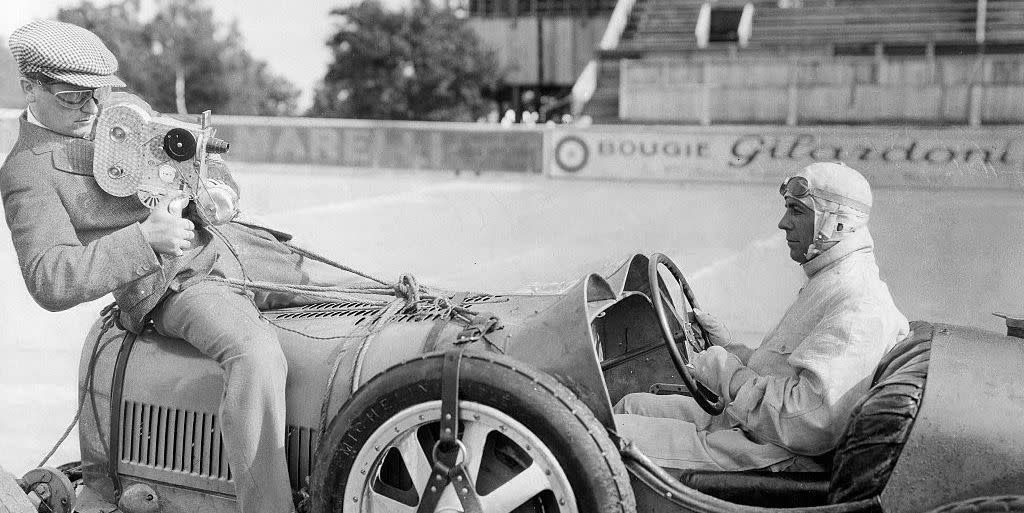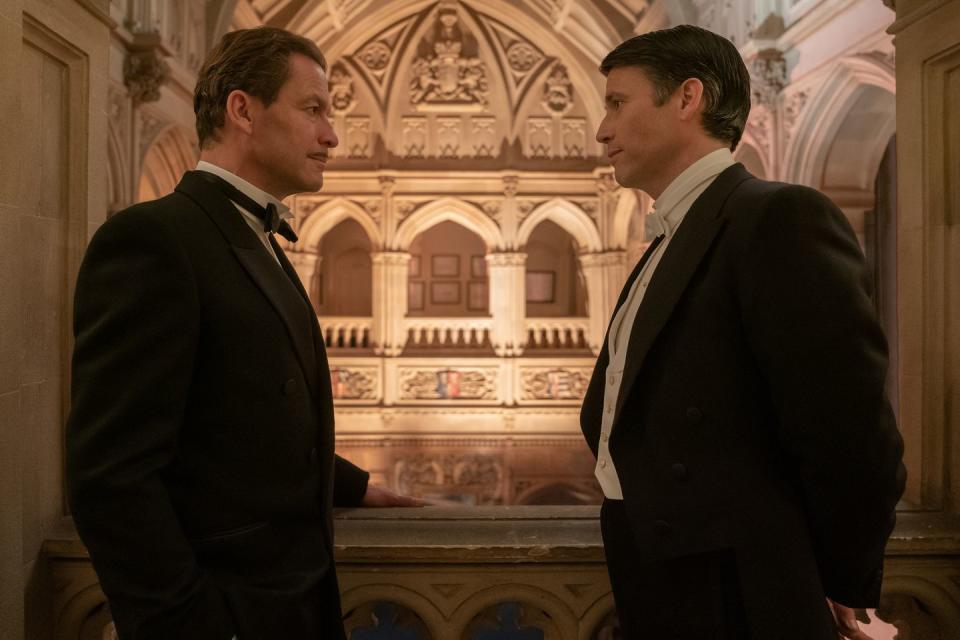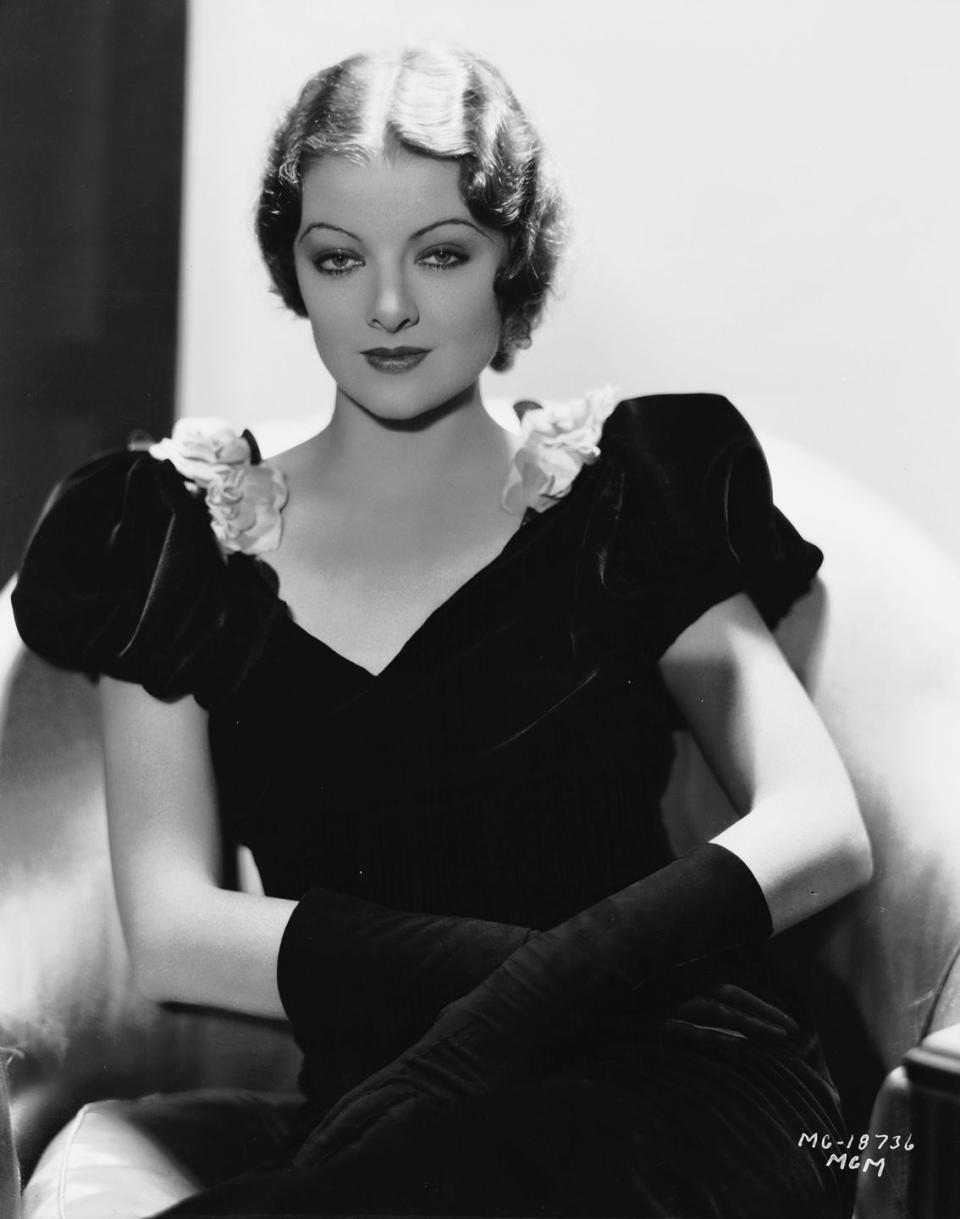The True Story Behind the Rise of the "Talkies" in Downton Abbey: A New Era

- Oops!Something went wrong.Please try again later.
- Oops!Something went wrong.Please try again later.
"Hearst Magazines and Yahoo may earn commission or revenue on some items through the links below."
Minor spoilers ahead for Downton Abbey: A New Era.
One plot in the second Downton Abbey movie centers on director Jack Barber (Hugh Dancy), who is filming his latest project at Downton under the watchful eye of Lady Mary (Michelle Dockery). After they start production, Barber hears from his studio that his movie is being shut down because silent films are no longer selling tickets like "talkies" (movies where there is recorded dialogue). Soon, the cast and crew pivots to making a film with dubbed conversation.
Downton Abbey creator Julian Fellowes was extremely interested in this moment in time. "By the end of the '20s, the old way, the 19th century, was really in retreat," he tells Town & Country. "Film was the art form invented by the 20th century." Therefore, having a movie film at Downton was a way for modern times to "invade Downton," Fellowes said.

Fellowes took inspiration from the production of Alfred Hitchock's Blackmail, the first British sound feature, or "talkie." The movie, like Barber's fictional one in Downton: Abbey: A New Era, began as a silent film. However, after production got underway, Hitchcock was asked to film parts in sound.
"After a good deal of hesitation, the producers decided [the film] would be silent except for the last reel," Hitchock said in an interview with François Truffant, found in Hitchcock/Truffaut. "But since I suspected the producers might change their minds and eventually want an all-sound picture, I worked it out that way. We utilized the techniques of talkies, but without sound. Then, when the picture was completed, I raised objections to the part-sound version, and they gave me carte blanche to shoot some of the scenes over."
The studio would go on release two versions of Blackmail: one silent and one with dubbed dialogue.
The switch was not smooth. Blackmail lead actress Anny Ondra was a raised in Prague and reportedly had a very thick accent—so she had to mime her dialogue, and British actress Joan Barry stood off-camera, speaking her lines. This is essentially what happens in Downton Abbey: A New Era: silent film star Myrna's (Laura Haddock) accent is deemed unsuitable, so Lady Mary steps in.
Watch Blackmail on Prime Video

Blackmail's transition from silent film to talkie captures the rise of talkies at the end of the 1920s. The 1927 release of The Jazz Singer, a musical film, marked the first feature-length film with synchronized dialogue. (Though other films had utilized synchronized sound before.) Music critic Deems Taylor wrote in 1943's A Pictoral History of the Movies that The Jazz Singer "turned the film industry topsy-turvy and consigned the silent picture to the scrap heap."
Yet, the industry evolution didn't happen overnight. "There is no unanticipated landmark event or watershed film which separates the golden age of silents from the modern age of the talkies," writes film scholar Donald Crafton in The Talkies: American Cinema’s Transition to Sound 1926-1931. "The transition was years in the making and in the finishing."
Crafton points to the economic pressure of the Depression as one major reason Hollywood turned to talkies. "After 1930," he writes, "consumers could or would not spend their dwindling resources on the movies the way they did in the twenties. Though the pressure of standardization was always present in Hollywood, it was hard times—that is, lost admission revenue—that definitively forced the industry to limit its diverse, hedging approach to technology."
The Depression convinced studios that films needed to have mass appeal—and that meant sound. Essentially, Crafton argues in The Talkies, in the late 1920s, studios initially tried to hedge by continuing with silent production but creating "part" talkies (like was suggested for Blackmail), or even two versions of the same film, but by the early 1930s, they had to commit to one method.

Another thing Downton Abbey: A New Era gets right about this transitional time was the stress and pressure silent actors felt.
In a 1977 New York Times article marking the fiftieth anniversary of the transition to talkies, journalist Guy Flatley interviewed numerous silent film stars about the time. "We were taken to the sound studio at Paramount to find out who had a voice and who didn't. Each day, they'd bring in a famous star, and he'd be in there as long as three hours," Buddy Rogers recalls. He ended up being voice-tested in a movie called Varsity, and it "worked out fine."

Actress Myrna Loy told Flatley, "It was a dreadful time, believe me. If anyone says it wasn't, he just wasn't there. There was panic everywhere, and a lot of people said, ‘This is ridiculous! Who wants to hear people talk?’" Yet, Loy, like Rogers, made a career in talkies.
Not everyone was so lucky; for example, Raymond Griffith, a silent film star, had lost his voice when he was young and spoke in a hoarse whisper. As Devin Faraci writes in "Talkie Terror," "In the silents his ragged voice was hidden, but that microphone demanded more than Griffiths could give."
In Downton Abbey: A New Era, both silent film stars Guy (Dominic West) and Myrna find a way forward in the changing landscape of the film industry: Guy's voice is deemed acceptable, and Myrna learns an American accent to try to make it in Hollywood. A happily ever after for both of them.
You Might Also Like

